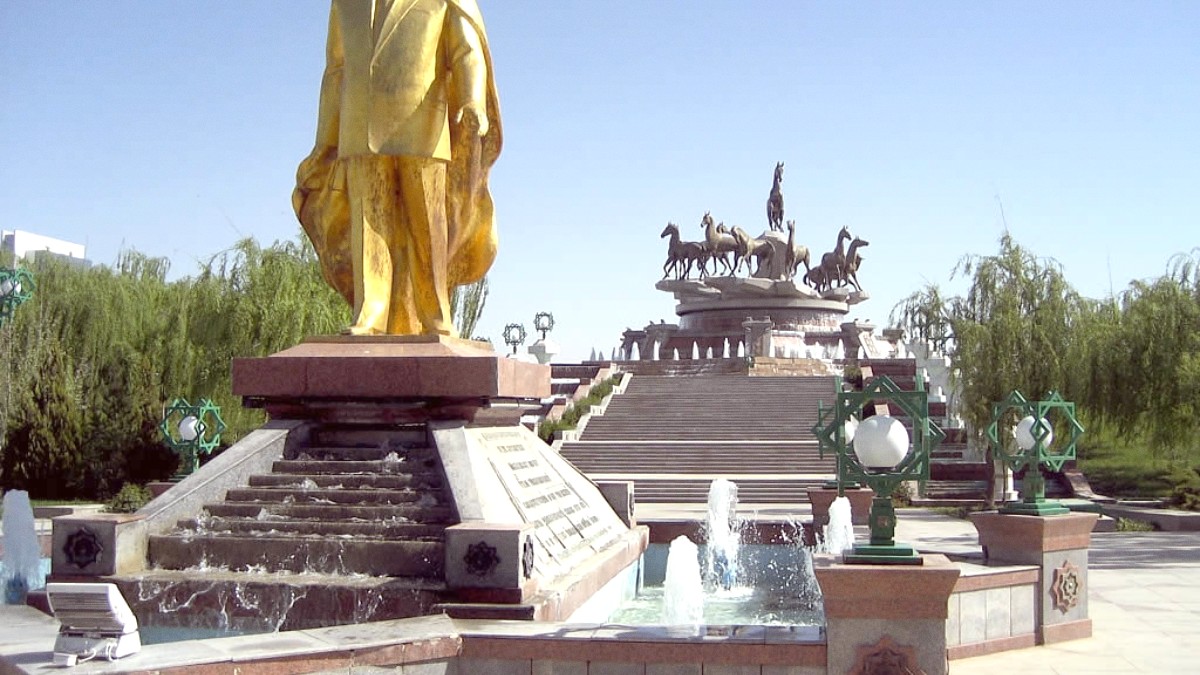
Turkmenistan
Turkmen cuisine draws heavily from its nomadic heritage and Central Asian neighbors. Dishes are hearty, formulated to sustain a mobile lifestyle.
Meat, especially lamb, beef, and camel, forms a base, alongside rice, dairy products, and baked goods. A limited spice range allows natural ingredient flavors to surface.
Lamb, beef, camel, and chicken are widely consumed, often cooked until tender.
Rice is a staple (plov), with wheat in breads and noodles. Yogurts (gatyk) and fermented milks (çal) are common.
Onions, carrots, potatoes, tomatoes feature frequently. Cumin, black pepper, red pepper, and garlic are main spices.
The national dish: savory rice pilaf with meat (lamb/beef), carrots, and onions.
Found at most local restaurants and cafes.
Skewered and grilled marinated meat, often lamb, beef, or chicken, with a smoky flavor.
Widely available at street stalls and restaurants, especially at the Russian Bazaar.
Large steamed dumplings filled with minced meat and onions, often served with sour cream.
A satisfying and flavorful dish.
Green tea is ubiquitous, served at all times. Black tea is also available.
Chal is fermented camel's milk, a traditional and acquired taste. Ayran is a salty yogurt drink.
Mainly found within upscale hotels (Oguzkent, Yyldyz). These offer international cuisine and refined Turkmen dishes in formal settings.
Numerous local restaurants and cafes across the city. They offer traditional Turkmen and Russian cuisine in comfortable settings.
The Russian Bazaar (Gulistan Bazaar) features many food stalls and small eateries for cheap, authentic local dishes.
International cuisine options are limited outside of major hotels.
Some hotels may offer Italian, European, or Chinese dishes for international guests.
Ashgabat is not a diverse culinary hub for a wide range of international cuisines.
Focus on local food for the most authentic culinary experience.
The "Bagt Koshgi" offers banquet halls for celebratory dining.
Some upscale restaurants may feature traditional Turkmen music during dinner.
Explore Altyn Asyr Bazaar for food vendors, dried fruits, and local delicacies.
Taste Halva or enjoy dried fruits and nuts found in markets.
Awareness of gluten-free or specific allergen requirements is very low among restaurant staff. Cross-contamination is likely.
Carry translation cards. Focus on naturally gluten-free foods like grilled meat or plain rice. Avoid all bread, noodles, and dumplings.
Consider carrying Vegetarian protein bars as a backup.
Pack Gluten-free snacks, especially for travel days or limited dining options.
Your tour guide is your best resource for relaying your needs to restaurants and for finding suitable meals.
Learning phrases in Russian or Turkmen to explain dietary needs may be useful.
Formal cooking classes specifically for tourists are not widely available in Ashgabat.
Food tours may be incorporated as part of a broader cultural tour package.
These tours often focus on visiting markets (like Russian Bazaar) and sampling street food with a knowledgeable guide.
Direct interactions with food producers are not a common tourist activity directly from Ashgabat.
Possible in rural areas as part of a specialized, pre-arranged tour.
No major food festivals are specifically aimed at tourists.
National holidays or local celebrations might involve special meals or public feasts, generally for locals.
Bread is a central and respected part of every meal, symbolizing welcome and abundance in Turkmen culture.
Tipping gains acceptance in tourist-oriented services. It is a sign of appreciation for good service, though not a deep-rooted tradition.
Certain dishes, like those with pumpkin, are more prevalent in autumn when in season. Some sweets mark Nowruz in March.
For an authentic culinary adventure, frequent local cafes and markets.